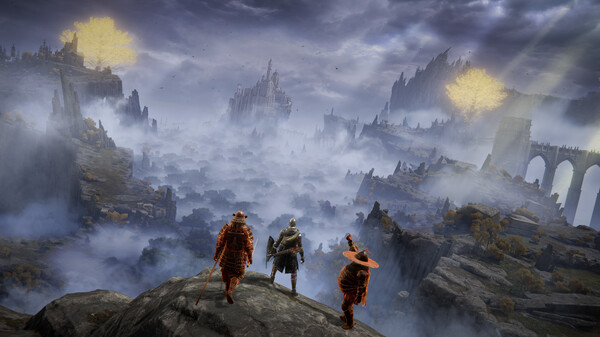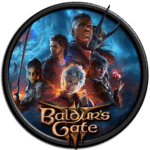Elden Ring, the critically acclaimed action RPG by FromSoftware, is renowned for its vast open world, intricate lore, and brutal difficulty. While its open-world exploration captured the imagination of millions, a core part of its soul still lies in the meticulously crafted "legacy dungeons." These locations, like Stormveil Castle and Leyndell, Royal Capital, are distinct from the open world in both scale and structure. This article explores the design philosophy, player experience, and ongoing debates surrounding these legacy dungeons—how they elevate and sometimes hinder the game’s overall pacing and accessibility.

The Return to Form: What Makes a Legacy Dungeon?
Legacy dungeons are a throwback to FromSoftware’s earlier level design, akin to areas in *Dark Souls* and *Bloodborne*. They are densely interconnected, multi-layered environments filled with verticality, shortcuts, and hostile NPCs. Unlike the open world of the Lands Between, legacy dungeons feel like self-contained ecosystems with their own rules.
These dungeons create tension through their claustrophobic corridors, deadly ambushes, and high-stakes exploration. In contrast to the freedom of the open world, legacy dungeons deliberately funnel players down certain paths, demanding more precision and awareness. This difference highlights FromSoftware’s dual design ethos: liberation versus control.
Stormveil Castle: A Gothic Gauntlet
The First True Challenge
Stormveil Castle is the first major legacy dungeon encountered by most players. Acting as a gateway test, it filters casual explorers from dedicated Tarnished. Its winding staircases, ballista traps, and heavily armored knights force a steep learning curve. Here, players are introduced to vertical map reading—scouting ledges and window paths—and environmental storytelling at its finest.
Lessons in Pacing
The dungeon's design cleverly alternates between large open courtyards and narrow corridors. This structure allows FromSoftware to play with pacing, inserting moments of quiet tension between brutal enemy encounters. It’s also where players first experience the joy of discovering a shortcut, a critical component of legacy dungeon navigation that rewards curiosity.
Vertical Complexity: Designing in 3D Space
The Z-Axis as a Weapon
Verticality in legacy dungeons isn’t just a design choice—it’s a challenge multiplier. Players must consider threats from above, below, and often from hidden perches. FromSoftware uses verticality to break player expectations and reinforce the labyrinthine feel of these spaces.
Exploration Meets Risk
In areas like Raya Lucaria Academy or Volcano Manor, climbing over rooftops or descending into basements can uncover hidden items, powerful NPCs, or alternate boss paths. These choices elevate player agency while demanding risk-reward calculations. Unlike linear paths, verticality turns maps into puzzles.
Player Navigation and Mental Mapping
Deliberate Disorientation
Legacy dungeons challenge a player's ability to mentally map their environment. Without a mini-map, players must rely on landmarks, architectural features, and memory. This cognitive load intensifies the experience and amplifies satisfaction when paths reconnect.
Shortcut Euphoria
Unlocking a shortcut in a legacy dungeon is often more rewarding than defeating a boss. These moments signal mastery over space and offer a psychological checkpoint—a breath before the next plunge into danger. They are FromSoftware’s way of encouraging perseverance through dread.
The Role of Enemies in Legacy Dungeon Identity
Enemy Placement as Storytelling
Every enemy in a legacy dungeon is hand-placed to serve a narrative or mechanical function. In Stormveil, knights and birds with explosive barrels tell a story of militarization and madness. In Nokron, the Silver Tears hint at ancient experimentation.
Difficulty through Density
Unlike the open world, legacy dungeons often overwhelm with tight quarters and enemy density. This controlled chaos forces players to switch from the freedom of horseback combat to intimate one-on-one skirmishes. The resulting tension defines the dungeon's character.
Boss Fights: The Narrative Climaxes
More Than a Test of Skill
Bosses in legacy dungeons aren't just mechanical hurdles—they're emotional climaxes. Margit, Godrick, Rennala, and Morgott all embody the legacy of the world and the player's role within it. Their arenas are as symbolic as they are punishing.
Cinematic Framing
FromSoftware often stages boss arenas in massive halls or open vistas, visually separating them from the rest of the dungeon. These spaces carry thematic weight and allow for dramatic lighting and framing, deepening immersion before the fight even begins.
Resource Management: Scarcity in Design
Checkpoints and Estus Allocation
The scarcity of Sites of Grace and Estus (Flask) recharge points in legacy dungeons forces players to be conservative. Each corridor becomes a calculated risk, and healing becomes precious. This scarcity enhances tension while deepening immersion.
The Mental Toll of Endurance
Extended runs between checkpoints can lead to mental fatigue, especially in areas like Leyndell. This endurance-based design serves a purpose—it evokes the grind of a Tarnished slowly clawing their way through a hostile world, making eventual triumph all the sweeter.
Environmental Storytelling and Lore Delivery
Worldbuilding Without Words
Legacy dungeons are museums of decay. From the broken altars in Stormveil to the abandoned research in Raya Lucaria, each room contributes to a silent narrative. The careful placement of objects and corpses often says more than any quest dialogue.
Symbolism in Architecture
Stormveil’s warped gothic architecture evokes power corrupted by madness. Leyndell’s gilded halls hint at grandeur masking rot. These details reinforce the larger themes of *Elden Ring*: ambition, decay, and the illusion of control.
Player Frustration and the "Quit Moment"
The Danger of Overdesign
While legacy dungeons are praised, they also harbor some of the game’s highest quit rates. Maze-like layouts, enemy ambushes, and long runs without checkpoints frustrate players. Volcano Manor, for instance, is criticized for its disorienting layout and unfair traps.
Balancing Challenge and Fatigue
FromSoftware walks a tightrope: too easy, and legacy dungeons lose their identity; too hard, and players disengage. Ideally, difficulty should empower players to adapt, not punish exploration. Not all legacy dungeons strike that balance.
Legacy Dungeons vs. Open World: A Design Dissonance?
Contrasting Philosophies
The freedom of the Lands Between often clashes with the rigidity of legacy dungeons. This can create tonal whiplash—players go from serene exploration to punishing gauntlets with little warning. This contrast, while deliberate, isn’t always smooth.
When the World Feels Disconnected
In some cases, legacy dungeons feel like theme parks rather than natural extensions of the world. Their self-contained nature and sudden difficulty spikes can feel alien to the otherwise fluid rhythm of exploration, leading to criticism about pacing.
The Future of Legacy Dungeons in Soulsborne Games
Evolving the Formula
The success of legacy dungeons in *Elden Ring* ensures they will return in future FromSoftware titles, but refinement is necessary. Future designs may incorporate more dynamic elements—weather, NPC movement, or adaptive AI—to further blend narrative and gameplay.
Integration Over Isolation
To truly evolve, legacy dungeons should better integrate with the open world—not just geographically but thematically. Seamless transitions and more emergent storytelling could address the design dissonance that currently plagues some dungeons.
Conclusion
Legacy dungeons in *Elden Ring* are towering achievements in level design—puzzles, death traps, and theaters of war all wrapped into one. They challenge not just a player's reflexes, but their ability to interpret space, endure failure, and grasp unspoken narratives. At their best, they are unforgettable odysseys. At their worst, they alienate or exhaust. As FromSoftware looks to the future, the legacy of these dungeons will be both a blueprint and a burden. But within their walls lies the very soul of *Elden Ring*—a soul forged in suffering, exploration, and sublime discovery.





















